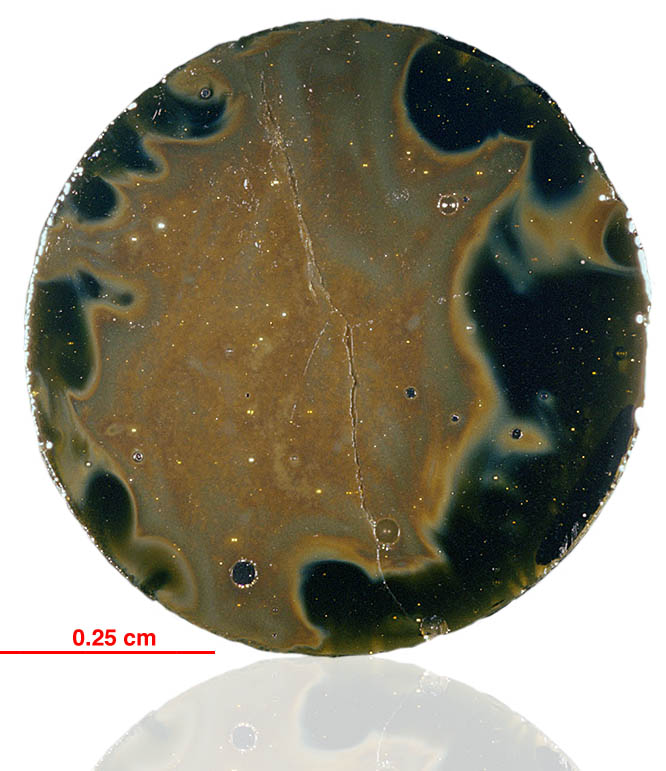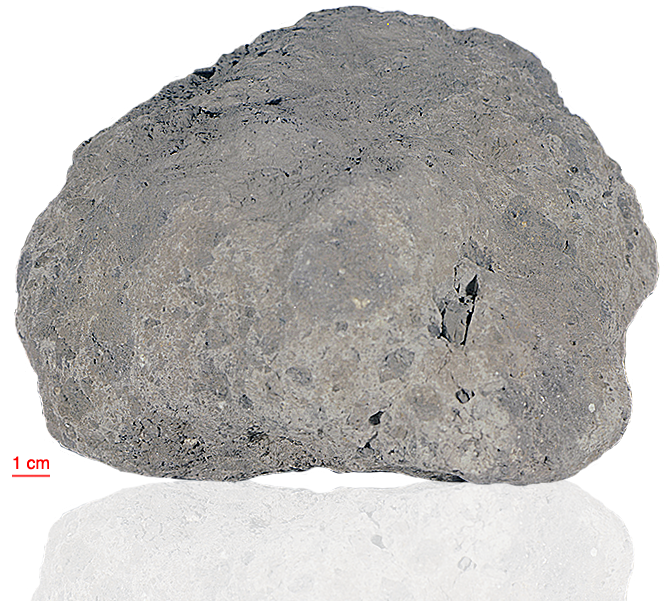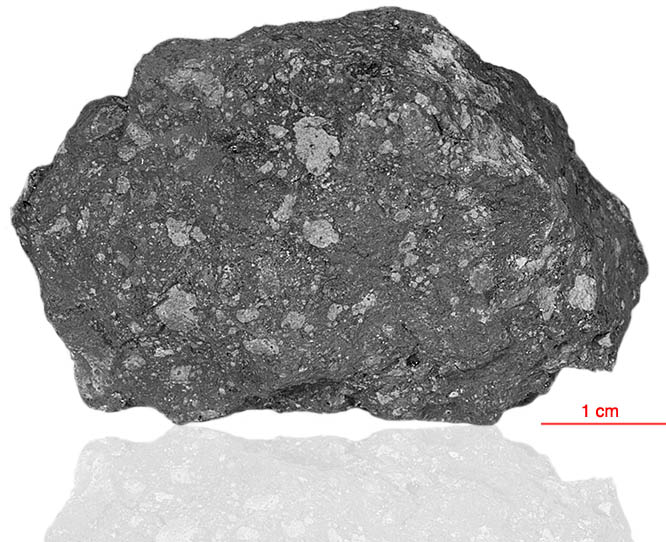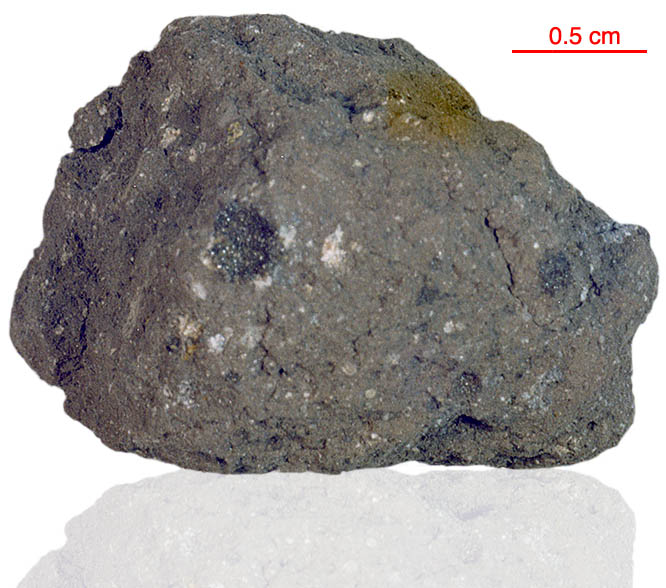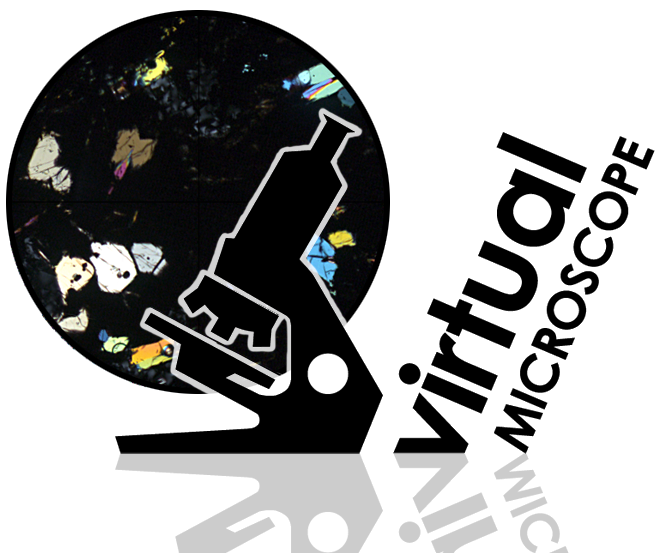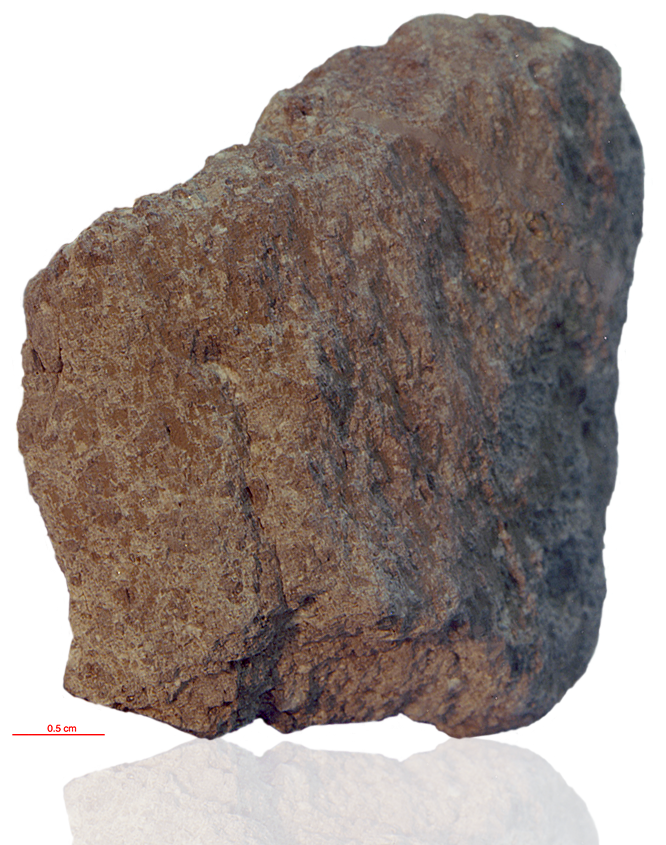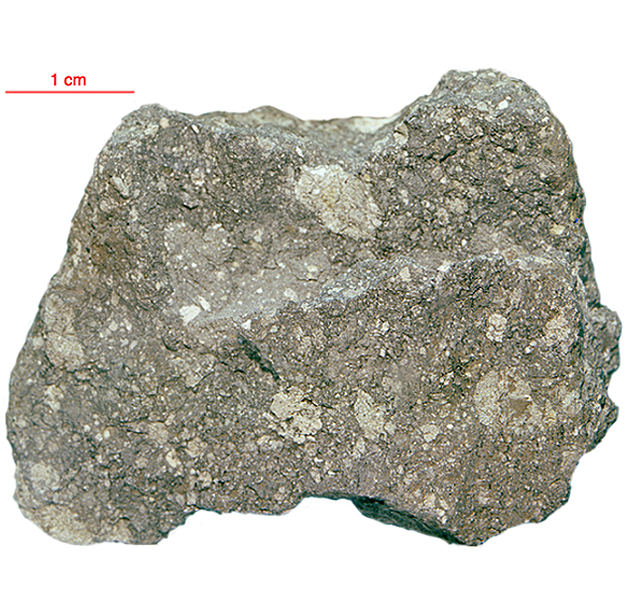
Fact sheet
14316 is a coherent breccia with an estimated 20 percent of blocky sub-angular to rounded clasts in a medium gray matrix. The clasts are dominantly light. 14316 consists of interlocking mixture of mineral and lithic clasts cemented together by a brownish glassy material. The fabric is reminiscent of 14315, but there are fewer chondrule-like bodies, and the clasts appear more digested by the matrix.
Rotation 1 shows a remarkable pink spinel crystal.
14316 weighed 38.2 grams before analysis. It has not been dated.
Further details of this and other Apollo samples are here: http://curator.jsc.nasa.gov/lunar/
The Apollo 14 landing site was in a region formed by impact-basin debris.
Most of the 42 kilograms of rocks and soil collected on Apollo 14 are breccias (rocks that are composed of fragments of other, older rocks). In some cases, the rock fragments that form a breccia are themselves breccias. Such rocks obviously have experienced complex histories with multiple generations of impact events. Some breccias were heated enough that some of the material in the rock was melted.
Apollo 14 was launched on 31 January 1971.

